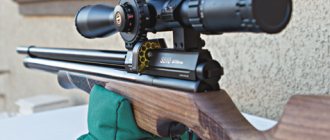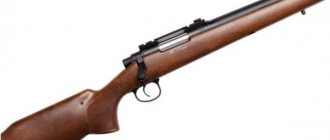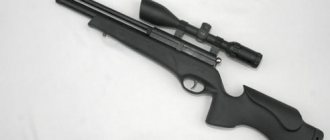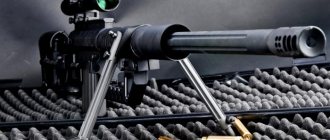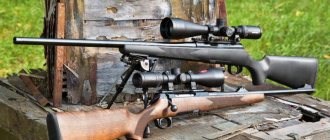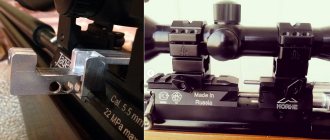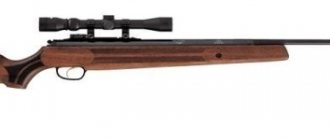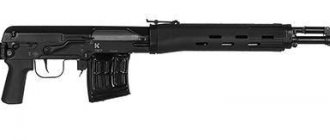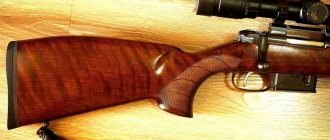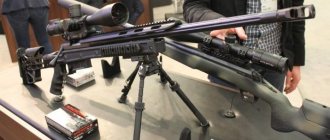If you're dealing with nuisance animals or if you're interested in long-range pest hunting, you'll need the best mint rifle. Pest control is important for the health of cattle, crops and disease prevention.
Stray hunting is also intended for fun and rifle practice, and while one might first think that vermin include rats and mice, the range of animals covered by the term is much greater. With the right weapon at hand and the ability to use the weapon safely and effectively, you'll find it easy to keep control of trouble or enjoy long-range insect hunting.
Varmint Rifle Attributes
A person who hunts animals to control pest populations, control unwanted pests to protect the environment, habitat, crops and plants, or challenge hunting is sometimes referred to as a varminter.
A hunter can also be involved in animal hunting when it comes to protecting livestock and animals on farmland; for example, a varminter may want to protect fox chicks, sheep and goats from wolves and coyotes or weasel ducks and raccoons. In some cases, animal hunting is necessary to protect domestic animals, such as coyote dogs and cats, feral cats, skunks, raccoons, cats, foxes, weasels, fishermen, and opossums.
When it comes to insect hunting, there are rifles that are ideal for making killing more efficient, effective and ethical. The types of weapons you use will depend on who is being hunted. Animals considered barbaric are not only regulated by special laws with minimal regulations, but parasites are also defined at the regional level. Consider, for example, the burial of animals such as prairie dogs and marmots, which can cause damage to property, landscaping and gardens.
Animals are quick and difficult to approach before running away, so a Varminter will need an accurate long-range rifle for use in pest control operations: in this case, Varminter rifles or the best Varmint rifles will have more specific features that make them better for unique tasks related to varmint control:
- Speed and trajectory. The ideal rebel rifle will have proper performance in terms of external ballistics, meaning the trajectory (physical trajectory of the projectile being ejected) created by the projectile is flat and the bullet is ejected from the rifle at a high velocity.
- Minimized Projectile Penetration: In terms of terminal ballistics performance, Varminter bullets are lightweight and do not penetrate deep into the dam.
- Acidified Attributes : The Rifle Rifle is one that offers impressive accuracy and ease of hitting small targets at both short and long ranges with equal effectiveness.
About the rifle caliber
Essentially, for all intents and purposes, a Varmint rifle is one that serves as a small caliber firearm. The gun is an air-powered gun that has high power and is actually used for the sole purpose of controlling barbary mint. If you were to compare the Varmint weapon to other weapons, it would serve as a bridge between a .22 caliber firearm and a larger, more powerful gaming rifle.
The most common weapon is actually the .22 long rifle, which is good for vermin control but may have little power for some of the smaller predators that a Varmint rifle could handle.
You won't need heavy ammo to chase down a Varmint, but you will need a weapon that fires a quick shot: a lot of Varmint, as woodchucks and other rodents dodge underground long before you reach 100 meters. animal With a fast bullet and a rifle that maintains a flat trajectory, there is less reliance on range or distance estimation as this feature is less critical to getting an accurate actual shot.
A Varmint rifle that can do its job well will have a speed in excess of 910 meters per second or 3000 feet per second. To this end, some rifles, such as the .204 Ruger and .220 Swift, can reach velocities of 1,200 meters per second or 4,000 feet per second, both of which are excellent options for long-range shooting. In fact, both weapons have a flat trajectory that is desirable at long range at high speed: this is the equation for choosing a superior Varmint rifle.
Types of actions
Action rifles dominate the class, with several specialized variants of the AR-15 (often called "modern sporting rifles") and single-shot rifles making up the rest. Most bolt-action rifles, if carefully studied, can be used successfully to hunt Warmian. Although almost all varmint guns are rifles, there are a few pistols, typically single-shot and rifle calibers such as pistols designed for metallic silhouette shooting, that have sufficient accuracy, range and trajectory to be used for varmint shooting . The Remington XP-100 bolt pistol and its aptly named .221 Fireball cartridge, introduced in 1963, was designed for Varmina hunting; the full name is “Model XP-100 Varmint Special.”
For varmint and pest control in urban areas, air guns are the right choice. While the limited power of an air rifle (usually much less than a .22 Long Rifle) limits its usefulness on small rodents at very short ranges, its limited penetration and low noise levels allow it to be used in areas where the use of a firearm is impractical . A popular airgun sport, field target is based on small game and varmint shooting with targets often shaped like rabbits, squirrels, and other suitable small varmints. The low bullet velocity of an air pistol makes accurate range estimation paramount, so high magnification telescopic sights with calibrated focus knobs are used to provide range estimation.
History of the use of the Varmint rifle.
The Ruger .204 and Swift .220 rifles are just two of the varmint rifles used throughout history, and they are not the only weapons that offer the speed and flat trajectory you desire when hunting varmints. The emphasis on a flat trajectory is critical and cannot be overstated: a difference of just five centimeters up or down and the doom of the tramp in question could be lost. These same bullets have a higher decay rate, less particle recoil and therefore offer the fastest death.
After World War I, the .22 caliber rifle became the weapon of choice for varminters. However, for those who wanted to pursue the Varmint at ranges greater than 100 meters, the .25-06 Remington, 6mm Remington and .243 Winchester rifles gained popularity for their speed and long-range accuracy. Multiple calibers do a great job of rounding out a varmint: As a varmint hunter, it's always a good idea to have a choice of guns and have more than one caliber to hunt with.
Interestingly, when it comes to shooting various barbarians, this is a hunting area that uses several calibers that are actually smaller than the 5.56 meter gun (.22). Some of the smaller caliber rifles used to kill jew's harps include the 4.5mm .17 pistol and the .17 Remington.
The Ruger .204 is also a small caliber option that hunters seem to have a taste for because it uses such small rounds. Alternatively, if a rogue hunter is looking for a weapon that is ideal for short shots and close range defines it as 90 meters or so, a .17 Hornady Magnum Rimfire, .223 Long Rifle and even a .17 Mach weapon would be good. Note that the barrel serves to move the projectile slower, which can result in both subsonic and supersonic transitions: this reduces accuracy.
Varmint Rules
Varmint Rules (January 30, 2022)
- 1. Varmint Competition
1.1 The competition includes three matches.
- 2. Match.
2.1 A match is a separate competition within a competition.
2.2 The participant must fire 15 shots or less to hit 11 targets in 12 minutes.
2.3 The shooter's task is to consistently hit the maximum possible number of targets in the designated shooting line in the minimum amount of time.
2.4 The shooter’s execution of the exercise is terminated when the following events occur:
- all targets in your shooting line are hit;
- 15 shots fired;
- The match time has expired.
2.5 When the shooter completes the exercise, he raises his hand and reports to the line judge: “Finished shooting”
2.6 The Range Director may end the match before 12 minutes have elapsed if all shooters have finished shooting.
- 3. Shooting lines, targets and flags.
3.1 Each line consists of 11 targets located at the kill lines from 50m to 100m with an installation interval of 5 meters.
3.2 Each line for the light class consists of 11 targets located at the kill lines from 30 to 80 m with an installation interval of 5 meters.
3.3 The size of the US (killing zone) of the target for each line is a painted disk with a diameter of 40 mm. The design of all targets on the target field is the same.
3.4 Each target has a sign indicating the line number and distance.
3.5 Targets are hit in order (increasing distance).
3.6 It is prohibited to install flags, as well as other wind direction indicators, behind the firing line, towards the shooting lines.
3.7 If there are no natural landmarks on the target field to determine the wind parameters, the organizer has the right to change the conditions of clause 3.6 of the rules and install flags (windsocks of the organizers in the form of ribbons).
- 4. Shooting position.
4.1 The shooting position is equipped with a shooting table with a cut-out table installed along the firing line and a stool.
4.2 At the shooting position, it is allowed to use rangefinders, laser target designators, weather stations, ballistic calculators and tables, wind indicators, telescopes, separate stops and pillows of any configuration, photo, audio, video recording devices, including those that allow shooting through a sight at shooting time.
4.3 It is prohibited for match participants to view video footage during the match.
- 5. Characteristics of classes and classification of rifles.
| Class | Distance | Weapon caliber | Bullet type | Power | Bullet weight For technical control | Weight limit | Electronic shot control: |
| Light (BR25HV) | 30-80 m | 4,5 (.177) 5,0 (.20) | diabolo | 27J | 0,67 0,89 | 15 pounds (6,803kg) | Electronic trigger only |
| Average | 50-100 m | 4,5 (.177) 5,0 (.20) 5,5 (.22) | diabolo | 56J | 0,67 0,89 1,17 | No | Electronic trigger only |
| Heavy | 50-100 m | 4,5 (.177) 5,0 (.20) 5,5 (.22) 6.35 (.25) 7,62 (.30) 9.00 (.35) | diabolo | No | No | No limits | |
| Super heavy | 50-100 m | 4,5 (.177) 5,0 (.20) 5,5 (.22) 6.35 (.25) 7,62 (.30) 9.00 (.35) | any | No | No | No limits |
5.1 All rifles are required to undergo technical control. Calculation of rifle energy is made using the arithmetic mean bullet speed of three shots.
5.2 During the exercise, it is allowed to change any settings only in the sighting devices.
- 6. Judicial team.
6.1 Chief referee – general organization of shooting, resolution of disputes, decisions on the final disqualification of a participant from the competition.
6.2 Line judges - counting the number of shots fired by a participant and recording the time for which the exercise was completed.
6.3 Shooting director - conducting the match and its full control at the turn.
6.4 The panel of judges resolves controversial issues within the framework of the current rules and makes decisions by a majority vote.
- 7. Target damage assessment.
7.1 The final decision on whether the shooter hits the targets is made by the refereeing team during full-time control of the killing zone of each target. The list of targets counted as hit by the shooter during the exercise is recorded in the list.
7.2 A target hit is counted when any visible trace (chip) of a bullet hitting the paint layer appears on the frontal plane of the kill zone; in any other case, the target is considered not hit.
- 8. Calculation of the result.
8.1 The overall result of the competition participant is summed up over 3 matches and includes:
- the sum of the maximum distances of the targets hit;
- total number of shots;
- total time spent hitting targets
8.2 Recording of affected distances is carried out sequentially from smallest to largest. The judge counts the distances sequentially only up to the first unhit target. All targets hit after the first unhit are not counted.
8.3 If the match time is over, and the shooter has bullets left and all targets are not hit, the total time of the match and the consumption of all bullets for the match are taken into account.
8.4 The winner of the competition is the shooter who, based on the results of 3 matches, has scored the HIGHEST sum of maximum distances with the LEAST number of shots fired in the LEAST time.
8.5 If 2 or more participants have an equal result in hitting targets, then the leader is determined by the LEAST number of shots spent hitting all targets.
8.6 If there is an equal number of targets hit and an equal number of shots fired, the participant with the least amount of time spent hitting the targets wins.
8.7 In the table of results for determining the winner, the following are indicated in descending order of importance:
- maximum distance of the target hit;
- number of shots;
- time to hit targets.
- 9. Standard commands at the shooting range.
To ensure that the competition is carried out clearly and without overlaps, the following commands are used:
- “This is match number XXX in class XXX. Participants - get ready to shoot!
Participants are called to the tables with rifles 5 minutes before the start in order to install and adjust rifles and rests, all rifles must be put on safety, with magazines unlocked and signal flags inserted into the bullet entrance according to design capabilities. The participant counts out 15 bullets to complete the exercise and removes all extra bullets from the table.
- "Shooters - bullets and drums for inspection"
Participants provide unloaded drums and bullets for inspection to someone from the judging panel for counting. Equipping the drum before the “ fire” is prohibited. The shooter has the right to ask the range director for additional time for preparation (no more than 3 minutes) if he has difficulties with the equipment. This opportunity is provided once per match.
- “You have 12 minutes before the end of the match! Fire!" (whistle - start)
None of the participants has the right to leave their position at the table until the end of the match. None of the competition participants has the right to enter the shooting position after the start of the match. If they are late, they will be considered a loss. Any shot before the whistle will lead to disqualification of the participant.
- The remaining time is announced: Six minutes. One minute. Ten seconds
- "Stop shooting!" (whistle - stop) Open the shutters and leave the tables!
The shooter must insert the signal flag into the bullet entrance and get up from the table. If there is a bullet in the barrel, immediately inform the referee (the referee must ask the shooter to unload the rifle into the ground). Any shots after the whistle (except those initiated by the referee to check the weapon for the absence of a bullet in the barrel) will disqualify the participant from the match . All equipment is removed from the table only after the rifle has been inspected by the Range Director, taken away and handed over to a team member for storage, or put into a case/case.
Clarifications:
- The rifle cannot be loaded until the “Fire!” command is given.
- The countdown begins with the beginning of the command “Fire!”
- The end of the countdown coincides with the end of the final whistle.
Any shot fired before the command “Fire!” or after the final whistle leads to the shooter being disqualified and prohibited from participating in all other shooting events that day
- 10. Emergency commands.
In the event of an emergency, the firing director commands “Cease fire!” (whistle - stop). This command must be executed immediately and without firing any shots. The match time stops.
- 11. Refilling with compressed air:
Air filling is carried out in a specially equipped place.
- 12. Refilling with compressed air:
Refueling is permitted during a match at the shooting table, subject to the following rules:
- · Placing the cylinder on the table is prohibited.
- · The participant ensures that the filling cylinder is secured in such a way as to prevent it from moving, falling, and also ensures the accessibility of the filling station.
- · The length of the filling hose should be minimal and should not reach the adjacent table.
- · The limits within which a competitor can stand and move to refuel the rifle are determined by the organizers for each competition. Moving a participant beyond the firing line or boundary, as well as any contact with an adjacent table or participant will result in disqualification.
- · Shooting with a refueling cylinder connected is prohibited.
- 13. Sportsmanship.
Noisy behavior is not permitted on or near the shooting range during a match. Everyone must provide shooters with the attitude they would like to feel when shooting for a new record. If competitors make noise and disturb others, a protest may be made to the Head Judge which may result in their disqualification. Competitors wishing to make a complaint regarding this matter must inform the referee or range director who will determine further action. The causes of concern are:
- Mobile phone calls
- Leaving places on the shooting line before the end of the match.
- Conversations with shooters or spectators during shooting.
- Cleaning weapons.
- Advice to participants, in any form.
- No participant should take up a shooting position after the match has started. If they are late for the start of the match, they are not entitled to participate in it, because this may disturb participating shooters.
The presented list of violations is not exhaustive.
Competitors must remain seated throughout the match until the end of the match. No one is allowed to enter the shooting line after the match has started. If they are late for the start of the match, they are not entitled to participate in it, because this may disturb participating shooters. All of the above rules also apply to spectators, who are required to keep noise to a minimum. In case of violation, they will be asked to leave, the shooting will not stop. Spectators are not allowed in the shooting area under any circumstances and should not talk to shooters in position, whether they are shooting or not.
Alcohol and alcohol abuse are not permitted in any sport. If any participant is suspected of being intoxicated or intoxicated, they will be removed from the firing line and assessed for intoxication. If the result is positive, he will be disqualified - see below. (PLEASE DO NOT DRINK ALCOHOL BETWEEN MATCHES OR WHILE AT THE SHOOTING RANGE).
- 14. Other.
14.1 The order of placing targets on the shooting field is determined by the organizer at each competition, depending on the conditions of the shooting range.
14.2 The classes that can take part in the competition are determined by the organizer based on the availability of structurally suitable targets. Participants are notified about this in advance.
14.3 The procedure for assessing target damage, clause 7.2 of the rules, can be changed by the organizer if there are targets with the ultrasound fixation in an “invisible” position when hitting the ultrasound.
14.4 The need to rotate tables is decided by the organizer at each competition, depending on the conditions of the shooting range.
14.5 The organizer reserves the right to conduct repeated, random, technical inspection of rifles.
14.6 The organizer has the right to make additions and clarifications and make decisions on them in the event of unusual situations not described in the current rules.
2022 version
Pneumatic Varminting is a discipline that came from firearms Varminting - hunting for small rodents. The targets in pneumatic Varminting are selected to fit the average head size of an average rodent (4 cm).
The shooter's task is to hit a certain number of targets at various distances in a certain number of shots and the allotted time.
Classes and weapons
- Class "Easy". Pneumatic weapons of PSP design, caliber up to 4.5 mm inclusive, power not exceeding 2.7 (diabolo type bullet, 0.547 g)
- Class "Sports". Pneumatic weapons of the PSP design with a caliber up to 5.5 mm inclusive, with a power not exceeding 5.5 (diabolo-type bullet, 1.175 g).
- Class "Open". Pneumatic weapons of PSP design with a caliber of up to 6.35 mm, power is not determined by these Rules.
Bullets are exclusively of the “diabolo” type.
Shooting lines and targets
Each line has 11 targets located on the hitting lines from 50m to 100m. The interval between the target installation lines is 5m, the sequence of hitting the targets does not matter. Each line has a designation of the distance of the lines and boundaries made by signs attached to the target stands. The size of the ultrasound for each line is a circle with a diameter of 40 mm. The design of all targets on the target field is the same and provides for two positions of the killing zone - “Hit” and “Not hit”.
Competition
Each shooter must shoot 3 matches in the order of the competition schedule. The time of each match is 12 minutes. A shooter who finishes a match early must not leave the firing line until the command of the Competition Judge. The number of shots to hit targets in each match is 20 shots. The shooting position is from the shooting table. The target is considered hit when the ultrasound is overturned. All participants are assigned to shifts. The next shift at the firing line is required to provide 20 bullets for inspection by the judge. Equipping stores is allowed only after the “Fire” command. Upon receiving the “Fire” command (signal 2a of the whistle), the shooter independently engages the targets of the specified line. At the end of shooting (using 20 bullets or hitting the last target in his line), the participant raises his hand and reports: “Finished shooting.” After the report, the Line Judge records the time of the match of this shooter in the score sheet. Participants are not allowed to enter the target field after the end of the match.
Scoring
The overall result of the competition participant is summed up over 3 matches and includes: the sum of the maximum distances of the targets hit, the total number of shots for 3 matches spent on hitting targets and the total time spent by the DC on hitting targets in 3 matches. The match time of each participant is recorded after the DC report “Finishing shooting” or after the 20th shot, indicating the distance of the farthest target hit. At the same time, the results for each match are entered into an individual record: the distance of the farthest target hit, the number of shots and the time spent to hit it.
The affected distances are recorded sequentially from smallest to largest. The judge counts the distances sequentially only up to the first unhit target. All targets hit after the first unhit one do not count towards the match of this DC.
If the shooter missed the next distance in order (or hit someone other than his own), then the result of shooting will be the last distance hit on the CS line before the missed one, while the time and number of shots is recorded as recorded by the line judge on the report “finished shooting.” The winner of the competition is the shooter who, at the end of 3 matches, has scored the HIGHEST sum of maximum distances with the LEAST number of shots fired in the LEAST time. If 2 or more participants have an equal result in hitting targets, then the leader is determined by the LEAST number of shots spent hitting all targets. If there is an equal number of targets hit and an equal number of shots fired, the participant with the least amount of time spent hitting the targets wins.
In the table of results to determine the winner, the following are indicated in descending order of importance: 1- The maximum distance of the target hit. 2- Number of shots 3 - Time to hit targets
At the firing line it is prohibited:
· shoot after the command “Stop Shooting” (One whistle) · smoking during the match · leave the shooting area without the permission of the Chief Referee before the end of the match time. If it is necessary to refuel the rifle with air, the participant must raise his hand, after the permission of the Chief Judge, he can leave the shooting area to refuel. Additional time for this operation is not provided. · storage of high pressure cylinders and refueling of rifles. · Conduct conversations on the phone or with other participants. Comment on your shooting. · a participant is prohibited from continuing to hit the targets of his line after the results of his match have been recorded by the referee, using the total match time of the shift for training purposes.
· installation of flags, as well as other wind indicators, behind the line of the Firing Line, towards the target field.
Varmint rifle accessories
To make your chosen weapon even more effective, there are several Varmint rifle accessories that you can choose from. Available accessories make your gun easier to use and make it easier to hunt certain hours of the day, multiple locations, or certain predatory animals. Accessories you can and should consider include, but are not limited to, the following:
Applications: The basic rule when choosing a range for your varmint rifle is that the longer the range, the better off you will be when it's time to target your prey. For guns up to .223 Remington, a variable range of 4 to 16 is required for optimal results. If you go beyond the Remington .223, you can choose from 24, 32, and 40 power boost ranges.
mounts Yes, you need a mount to place the range on a varmint rifle, and you need a mount that doesn't create an issue between the range and the gun in terms of alignment. Therefore the scope of application is recommended for use with a Varmint rifle. The mount must have a Picatinny rail.
Silencers: Since varmints are fast motors, the hunt will only help if you decide to invest in silencers and sound suppressors. Combine your accuracy with a quieter strike and you'll be forced to kill more bugs. The suppressor you choose should be chosen carefully and you don't want it to interfere with shot speed.
Recommendations
- "Non-game animals." California Fish and Game Commission. Retrieved August 5, 2010.
- ^ a b
Craige, John Huston, Captain
The Practical Book of American Arms
(1950) Bramhall House, pp. 211–222 - ^ a b c d f g gram h i
Hornady, J.
Hornady's Handbook of Reloading Ammo
(1967) Hornady Manufacturing Company - Landis, Charles S. Twenty-Two Caliber Varmint Rifles
(1947) Telegraph Press - Landis, Charles S. Twenty-Two Caliber Varmint Rifles
(1947) Telegraph Press pp.118–147 - Landis, Charles S. Twenty-Two Caliber Varmint Rifles
(1947) Telegraph Press pp.36–43 - Skinner, Stan (September 2005). "Fireball .221 Remington." Weapons and ammunition
. Intermedia outdoors. Retrieved September 16, 2010. Additionally, shooters in the fairly populous eastern United States found that its noise signature was noticeably less noticeable than the significantly hotter .220 Swift. - Hawks, Chuck. ".223 Remington (5.56 mm NATO)." chuckhawks.com
. Retrieved January 17, 2022. - “What are the most popular calibers in the USA?” Glue of knowledge
. Brandon. Retrieved January 17, 2022. - Lewis, David. "223 vs. 308 - Rifle caliber comparison." House
. AmmunitionToGo. Retrieved January 18, 2022. - Zinn, Gary. "Comparison: Selected Ammo vs. Varmint Ammo (.204 Ruger, .223 Rem., .22-250 Rem., .243 Win., and .25-06 Rem.)." chuckhawks.com
. Retrieved January 18, 2022. - Landis, Charles S. Twenty-Two Caliber Varmint Rifles
(1947) Telegraph Press pp.73–93 - Landis, Charles S. Twenty-Two Caliber Varmint Rifles
(1947) Telegraph Press pp. 27–35 - Landis, Charles S. Twenty-Two Caliber Varmint Rifles
(1947) Telegraph Press, p.242.
